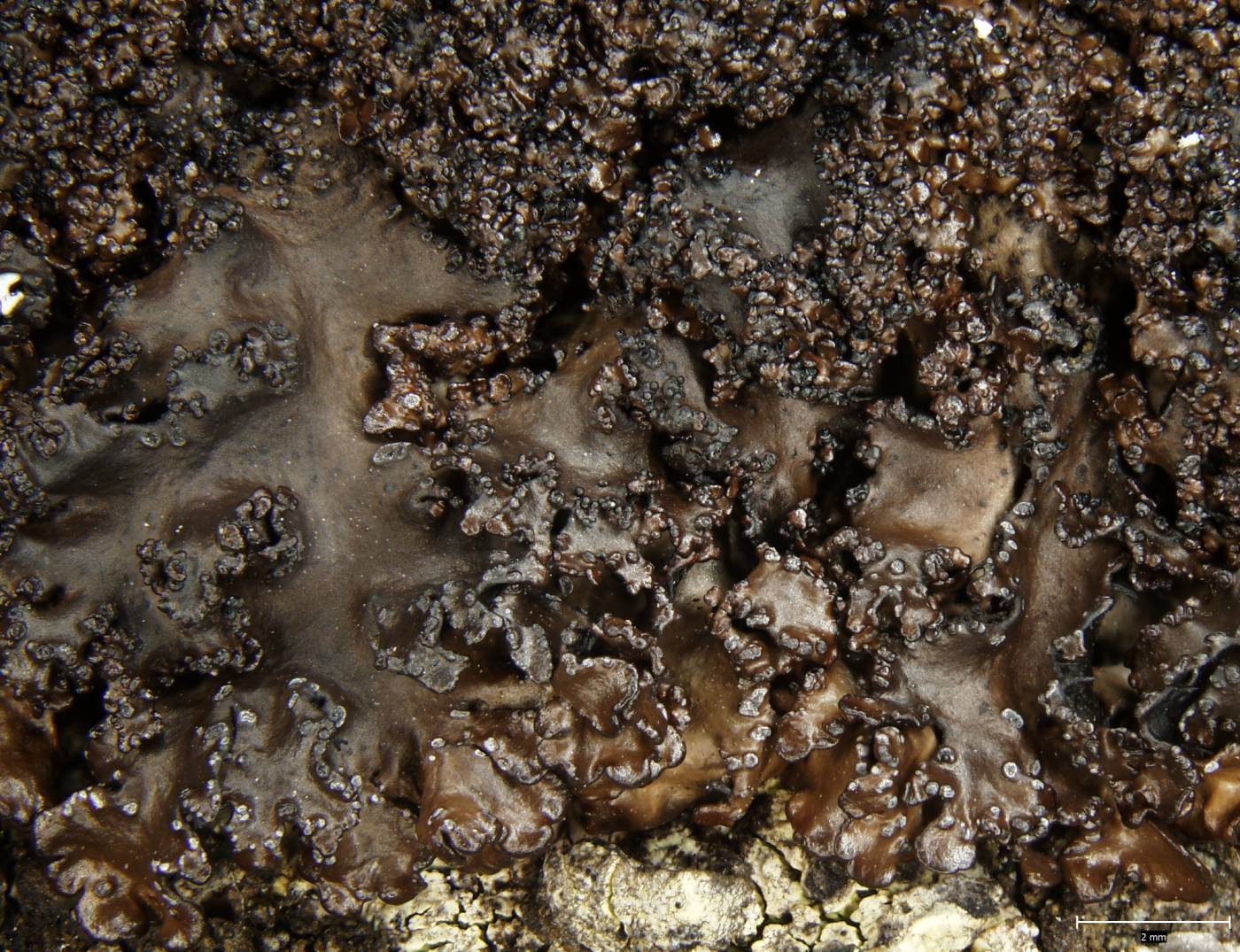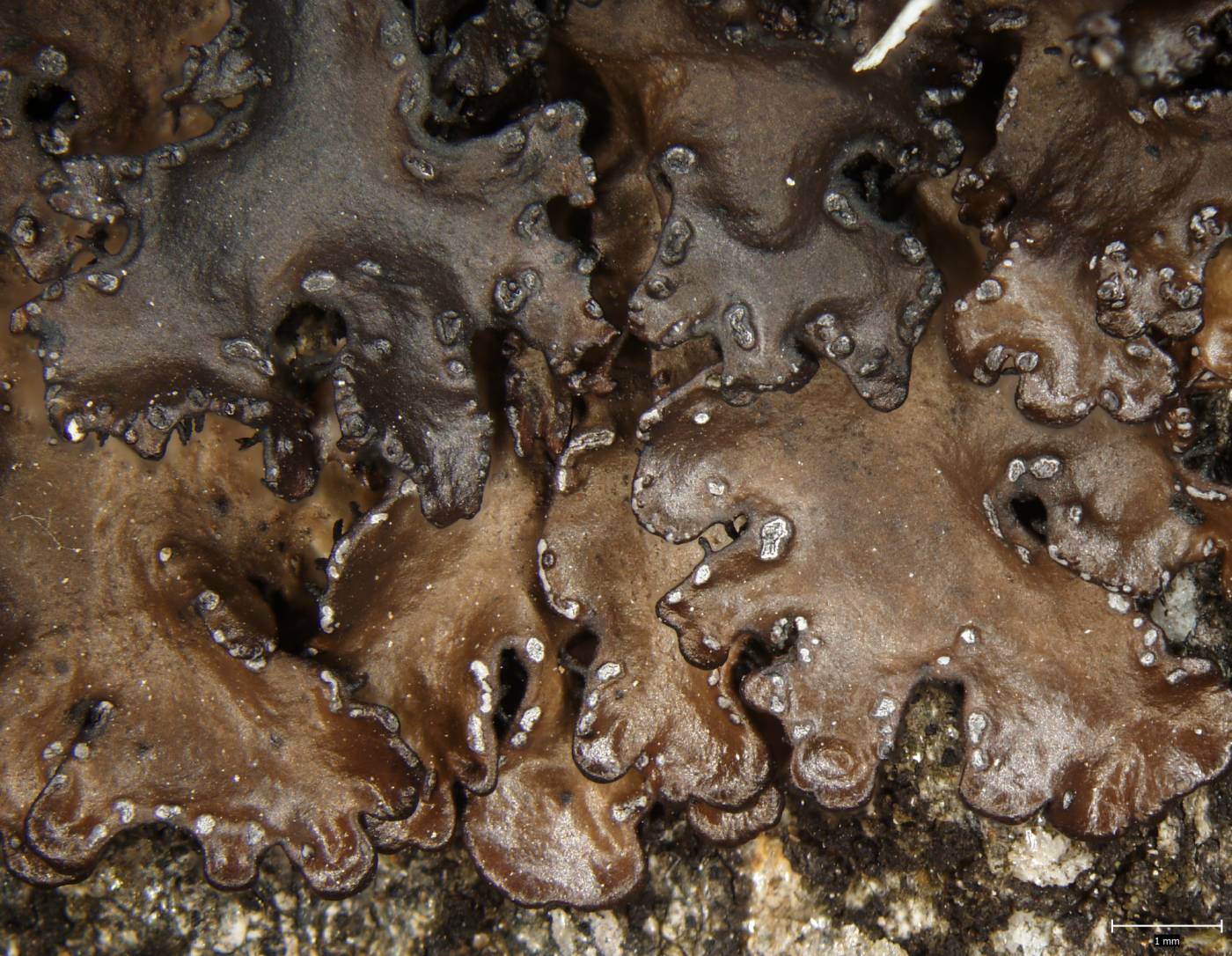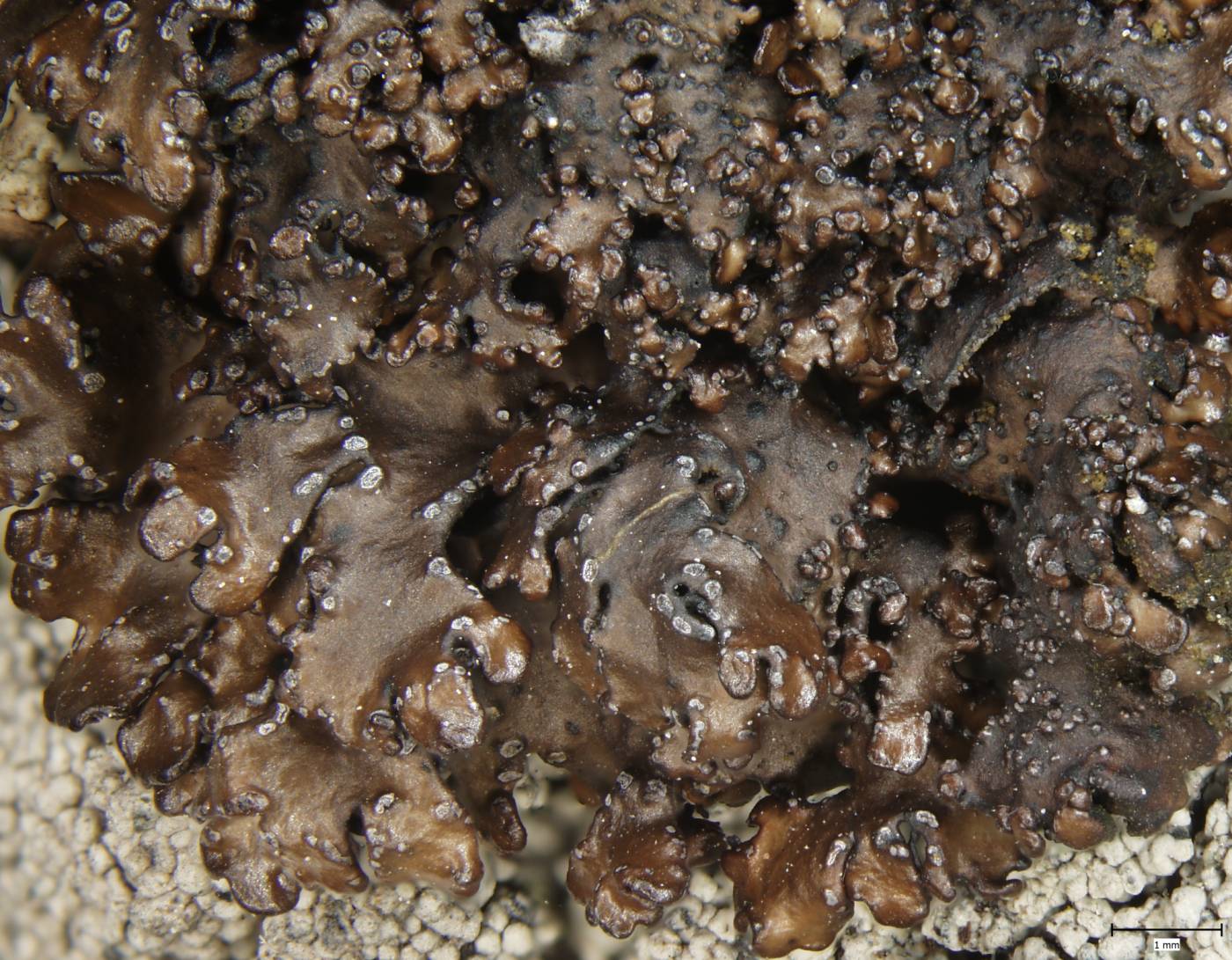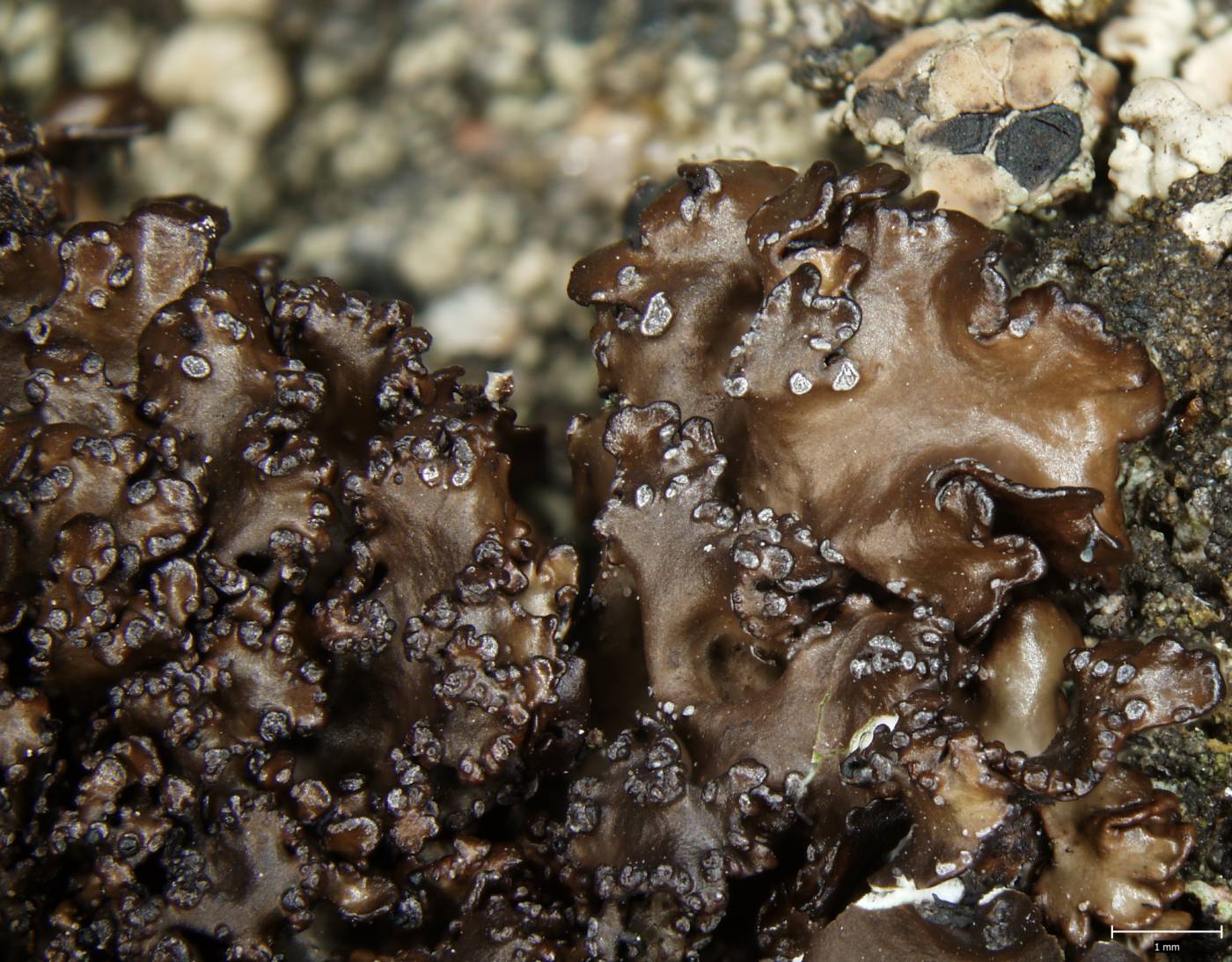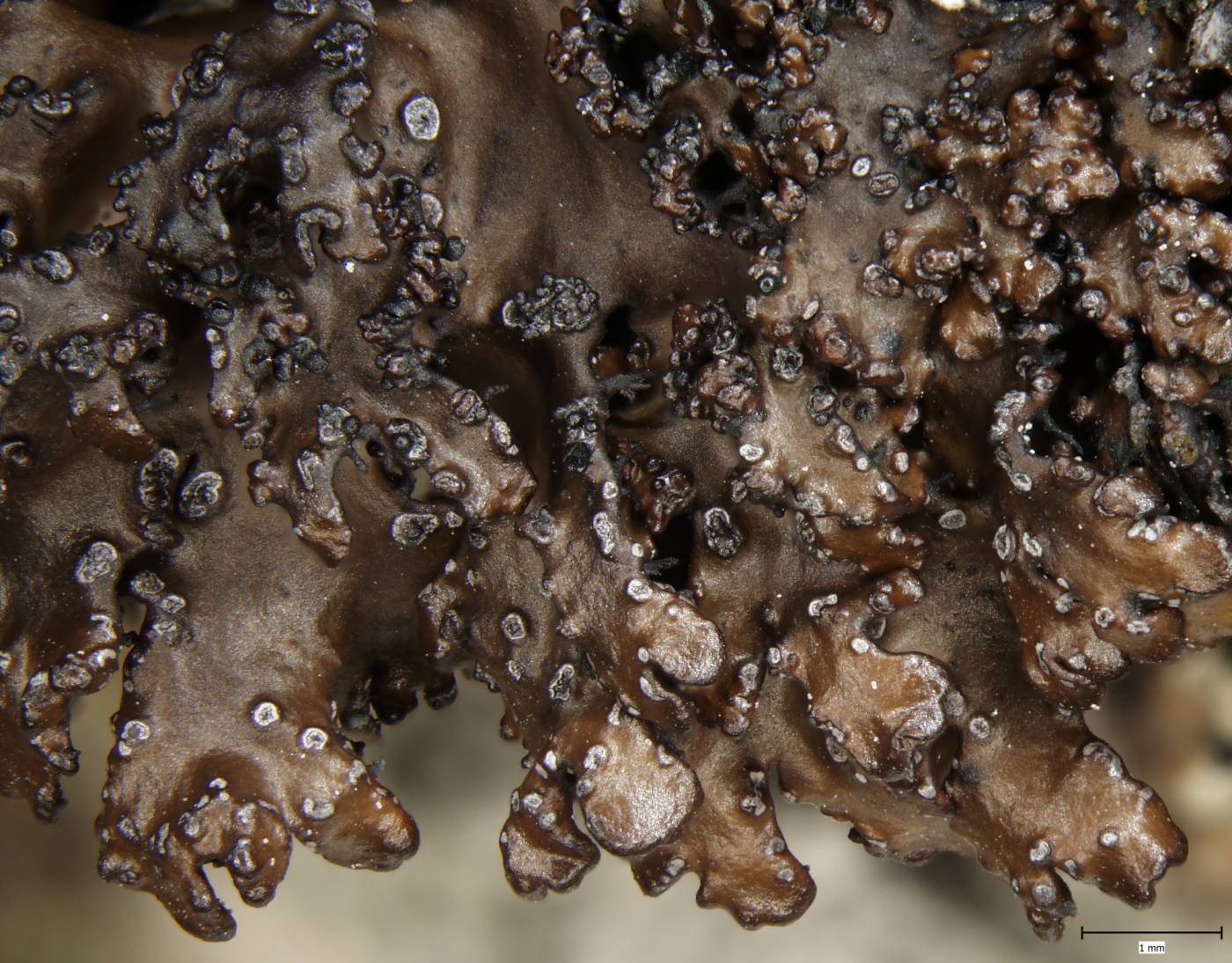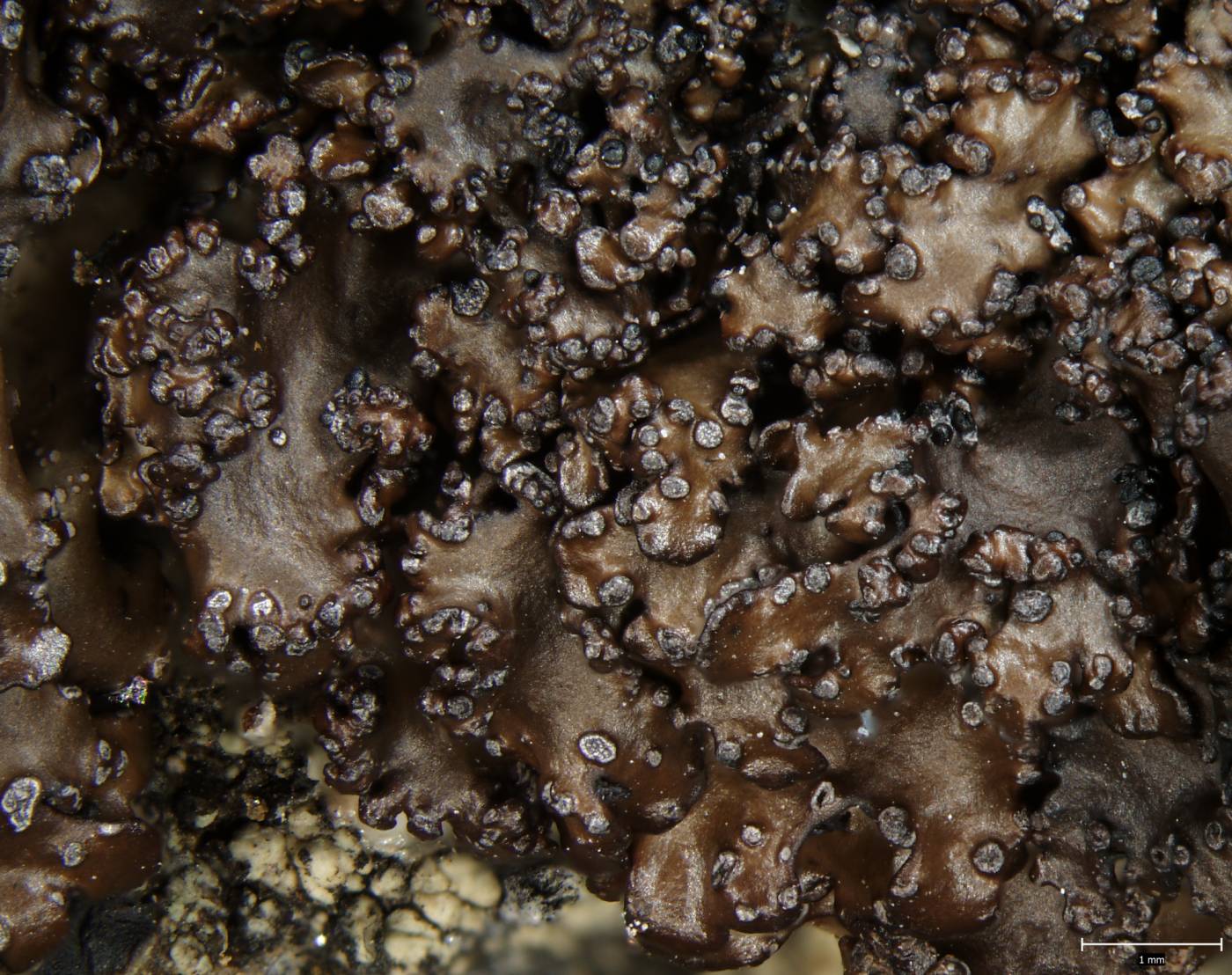Melanelia hepatizon is an arctic-alpine species with a circumpolar distribution. It grows on siliceous rocks in mountains. Its optimum is met above the upper tree line. In the Czech Republic, the lichen occurs sparsely in the most elevated mountains, such as in the Šumava Mts, Jizerské hory Mts, Krkonoše Mts and Hrubý Jeseník Mts. Besides, it may be found also in the sandstone area of Adršpach-Teplice Rocks.
The species may be mistaken for the very similar Cetrariella commixta, from which it differs in the black lobe underside and by the content of stictic and norstictic acids in medulla (K+ yellow or red). In the past, the two taxa were not properly distinguished in the Czech Republic. In the Catalogue of Lichens of the Czech Republic (Vězda & Liška 1999), some of the entries published under the names Parmelia fahluensis and Cetraria fahluensis, commonly recognised synonymous to M. hepatizon (or Cetraria hepatizon), actually refer to C. commixta (see Černohorský et al. 1956, Peksa 2008).
Literature: Černohorský Z., Nádvorník J. & Servít M. (1956): Klíč k určování lišejníků ČSR. I. díl. − ČSAV, Praha. Peksa O. [ed.] (2008): Zajímavé lichenologické nálezy IV. (Parmeliaceae). – Bryonora 42: 30–37.
taxonomic classification:Ascomycota → Lecanoromycetes → Lecanorales → Parmeliaceae → Melanelia
most frequented synonyms:Cetraria hepatizonRed List (Liška & Palice 2010):VU – vulnerable
Red List (Malíček 2023):C3 – endangered
Occurrence in the Czech Republic
All records: 57, confirmed 25. One click on a selected square displays particular record(s), including their source(s).
